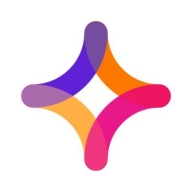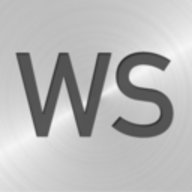

WhereScape RED and Jitterbit Harmony are competitors in the data integration and management space. WhereScape RED seems to have the upper hand for complex data projects due to its comprehensive feature set, while Jitterbit Harmony is highly appealing for cloud-centric needs because of its integration strength.
Features: WhereScape RED offers automated Data Warehouse tasks, efficient scheduling, and impact analysis, making it ideal for large-scale projects. Its automation in documentation and code generation reduces manual workload. Jitterbit Harmony provides pre-built connectors, user-friendly interface, and effortless data mapping, which simplify data integration tasks, especially across cloud platforms.
Room for Improvement: WhereScape RED could enhance its cloud application connectivity, user interface design, and flexibility in licensing. Jitterbit Harmony might improve its ETL process efficiency, documentation depth, and data transformation capabilities to become more suitable for complex deployments.
Ease of Deployment and Customer Service: WhereScape RED offers straightforward deployment with strong customer support that assists in setup and ongoing maintenance. Jitterbit Harmony provides an easy deployment experience with effective technical support. Jitterbit's focus on cloud integration simplifies data integration for businesses with cloud-based priorities.
Pricing and ROI: WhereScape RED has a higher initial setup cost but offers substantial ROI through automation and efficient data management. Jitterbit Harmony is competitively priced with flexible pricing tiers, providing cost-effectiveness for cloud integration projects. While WhereScape RED offers significant long-term time savings, Jitterbit Harmony is a wise investment for companies needing strong cloud connectivity.

Jitterbit Harmony is a comprehensive platform for data integration and API management, enabling seamless synchronization and automation across cloud-based and on-premises applications.
Users leverage Jitterbit Harmony to integrate systems like ERP and CRM applications, simplifying complex data workflows and enhancing automation. It supports efficient data migration and ensures smooth connectivity, handling diverse integration needs and helping streamline business processes. Users emphasize its drag-and-drop functionality and extensive templates, which contribute to its robust performance. However, improvements are needed in data mapping, error message clarity, and documentation, especially when dealing with large data volumes.
What are the key features of Jitterbit Harmony?Companies across retail, manufacturing, healthcare, and finance sectors use Jitterbit Harmony to integrate critical applications and automate workflows. In retail, it connects inventory systems with sales platforms, reducing manual effort. Manufacturers sync their ERP systems with supply chain software, optimizing operations. Healthcare organizations integrate patient management systems with insurance databases, streamlining patient care. Financial institutions use it to connect accounting software with banking systems, ensuring real-time financial data exchange.
WhereScape is data warehouse software that automates the Data Warehouse lifecycle. From implementation to maintenance, WhereScape will ensure your data warehouse projects are completed up to 5x faster than manual coding.
We monitor all Data Integration reviews to prevent fraudulent reviews and keep review quality high. We do not post reviews by company employees or direct competitors. We validate each review for authenticity via cross-reference with LinkedIn, and personal follow-up with the reviewer when necessary.